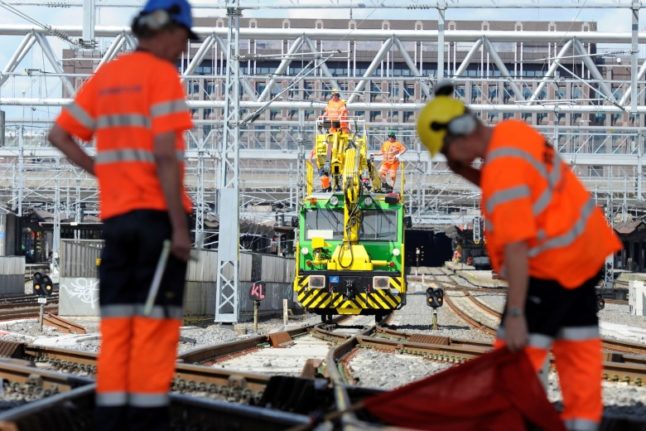Rail lines closed over Easter in Eastern Norway
Norway’s state-owned rail track operator Bane NOR is closing several lines around Oslo and elsewhere in Eastern Norway between April 1st and April 9th to upgrade the tracks, with all journeys served by bus replacements.
Here are the stretches of track affected:
Brakerøya–Mjøndalen/Sande. The R12, R13, RE10 and RE11 lines between Brakerøya and Mjøndalen in the city of Drammen will be closed.
Ski–Mysen/Rakkestad. The R22 line between Ski and Mysen and Rakkestad.
Oslo S–Ski / Moss / Rygge / Mysen / Rakkestad. Lines L2, R21, R22, R23 and RE20, from Oslo to Rakkestad.
Oslo S–Lillestrøm. The L1 line travelling from Oslo S to Lillestrøm.
The Airport Express Train from Oslo Airport to Oslo Central Station is also affected by the track work, as is the Sørtoget line between Oslo and Stavanger.
Bus replacements on Oslo to Gothenburg train. Between April 3rd and April 5th, trains from Oslo to Gothenburg will only travel as far as Halden, with a bus replacement service for the rest of the route. From April 6th to April 9th, trains will stop completely. Passengers are asked to use Vy Bus4You.
Bus replacements on Bergensbanen.
People travelling on the track towards Bergen should know that between April 1st and April 9th, the train goes directly from Oslo Central to Hønefoss, missing out on stops at Sandvika, Asker and Drammen.
Between April 7th and April 9th, trains will not travel between Bergen and Arna, with rail replacement buses ordered to take their place.
Travelling by road
Norwegian schools break up for påskeferie (Easter holidays) this Friday (March 31st) so you can expect heavy traffic on the roads out of the big cities starting from Friday afternoon and continuing over the weekend.
Typically well over a million Norwegians take to the roads over Easter to stay in their cabins or visit relatives.
There is also likely to be heavy traffic between Maundy Thursday (April 6th) and Easter Saturday (April 8th), and again on Easter Monday (April 10th) as people return home.
The E6 in Gudbrandsdalen around Lillehammer and the E18 in Agder tend to see delays over Easter,
The Norwegian Public Roads Administration has yet to issue its traffic prognosis for Easter (we will update this article when they do).
Travelling by air
While there are no strikes planned at Norwegian airports or at the airlines servicing them, anyone flying to Spain, Germany, Italy, or the UK’s Heathrow airport should check to make sure that their flight is not going to be disrupted.
Between now and April 13th, ground services and cargo handling unions in Spain working for Swissport are mounting 24-hour walkouts every Monday, Tuesday and Thursday.
This will impact most Spanish airports, including Madrid-Barajas, Barcelona-El Prat, Reus, Alicante, Valencia, Murcia, Málaga, Almería, Salamanca, Valladolid, Burgos, Logroño, Zaragoza, Huesca, Lanzarote, Gran Canaria and Tenerife Sur airports. It is not yet clear which flights will be affected.
The German transport unions Ver.di and EVG mounted a 24-hour mega strike on March 27th. EVG has promised not to strike over Easter, but Ver.di has so far not given any such assurances.
Those flying to Italy should keep in mind that air traffic controllers working for the company Enav are planning to strike from 1pm to 5pm on April 2nd.
READ ALSO: Calendar of the transport strikes expected in Italy this spring
Finally, 1,400 security guards at Terminal 5 at London Heathrow Airport plan to hold rolling strikes for 10 days from March 31st until April 9th, threatening “huge disruption and delays… throughout Easter.” Heathrow’s management have said that they aim to keep the airport “open and operational despite unnecessary threats of strike action by Unite”.



 Please whitelist us to continue reading.
Please whitelist us to continue reading.
Member comments